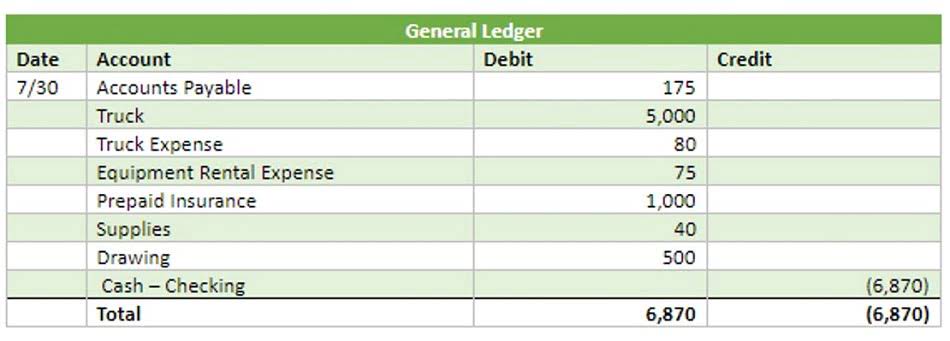Accounts Receivable Management: AR Tips, Process & Guide

In this case, what you can do is convert the account receivable into a long-term note. If the late payer is a customer of good standing, you’ll probably want to give them some leeway. This shows that you’re serious, which can sometimes be enough to nudge customers into paying. You deliver the goods and issue an invoice for this amount, with an instruction requesting payment within 30 days. Company B supplies the goods to company A and sends an invoice for that amount to be paid within 30 days. Learn what payment gateways are, how they work and how they serve you and your customers.
- As a critical component of cash flow, AR represents the funds your business expects to receive from customers for goods or services provided on credit.
- Automating your accounts receivable can also help reduce the administrative burden of managing it, such as sending automated reminders, invoicing, and tracking payments.
- The accounts receivable turnover ratio indicates how fast, on average, your customers pay the invoices you send out.
- Data analysis skills help AR professionals turn financial information into useful insights and smart business decisions.
- Managing it effectively means keeping track of unpaid invoices while ensuring your business has the funds to cover expenses, pay suppliers, and reinvest in growth.
- Effective management of AP and AR is crucial for maintaining the financial health of a business, ensuring smooth operations, and building strong relationships with suppliers and customers.
Client Service
You’ll want to monitor this report and implement a collections process for emailing and calling clients who fall behind. For example, you buy $1,000 in paper from a supplier who sends you an invoice for the goods. You’d have $1,000 in what does accounts receivable mean accounts payable on your balance sheet for the invoice.
Is Accounts Receivable a Debit or Credit?
We aim to be the most respected financial services firm in the world, serving corporations and individuals in more than 100 countries. Prepare for future growth with customized loan services, succession planning and capital for business equipment. Company bookkeeping may require your firm to post dozens of receivable transactions each week.

What does accounts receivable mean and how does it work?

From marketing to customer service to accounting, you have to juggle many tasks and responsibilities. You might also find that you’re continuously hearing Restaurant Cash Flow Management new terms, such as accounts receivable. A company can manage Accounts Receivable effectively by setting clear credit terms, regularly reviewing customer creditworthiness, and implementing efficient collection processes.
- Discover how strong cash forecasting bridges your company’s daily treasury operations with its long-term financial strategy.
- AR represents money owed to your business for goods or services delivered, while AP refers to money your business owes to suppliers or vendors.
- Because they represent funds owed to the company (and that are likely to be received), they are booked as an asset.
- Some businesses allow selling on credit to make the payment process easier.
The company may struggle to meet its financial obligations, which could ultimately lead to financial instability. Below is a break down of subject weightings in the FMVA® financial analyst program. As you can see there is a heavy focus on financial modeling, finance, Excel, business valuation, budgeting/forecasting, PowerPoint presentations, accounting and business strategy.
Apply payments efficiently
- Proper corrections help businesses stay on top of cash flow, minimize misreporting, and accurately track customers’ outstanding balances.
- Their day-to-day work balances multiple responsibilities, from keeping accurate financial records to addressing delinquent accounts to maintaining positive customer relationships.
- Checking aging reports regularly helps you focus on collecting overdue payments before they become a bigger problem.
- When the sale or service terms aren’t honoured, this causes a cash flow hiccup.
These metrics are invaluable for benchmarking performance and identifying areas for improvement. Fundamental analysts often evaluate accounts receivable in the context of turnover, also known as the accounts receivable turnover ratio. Offering these discounts can boost cash flow, as most businesses report quicker payments when they provide early payment discounts. Properly recording these discounts ensures that revenue and accounts receivable balances remain accurate, retained earnings balance sheet helping businesses avoid financial discrepancies. Nearly 32% of small businesses report that late payments significantly impact their cash flow. By properly recording these interest charges and tracking overdue accounts, businesses can reduce the negative effects of late payments and maintain financial stability.

A sample presentation of accounts receivable within a balance sheet appears in the following exhibit. The more efficiently your business manages AR, the stronger its reputation becomes. Consistent collections and reliable cash flow management signal financial stability, building trust with customers, suppliers, and partners.

That said, there are a few prudent steps it’s wise to take when this happens. You can use it to forecast cash flow, which helps you predict future cash positions, avoid cash shortages and make sure you use any spare cash efficiently. This can cause problems, particularly if you’re a smaller business whose livelihood depends on a few customers. Our significant technology investments deliver enterprise-grade treasury solutions for every stage of your receivables management journey. Work with our cash management consultants to optimize your entire AR process—from invoicing through reconciliation. Modern AR automation integrates seamlessly with your enterprise resource planning (ERP) systems, scaling operations while improving accuracy and efficiency.

